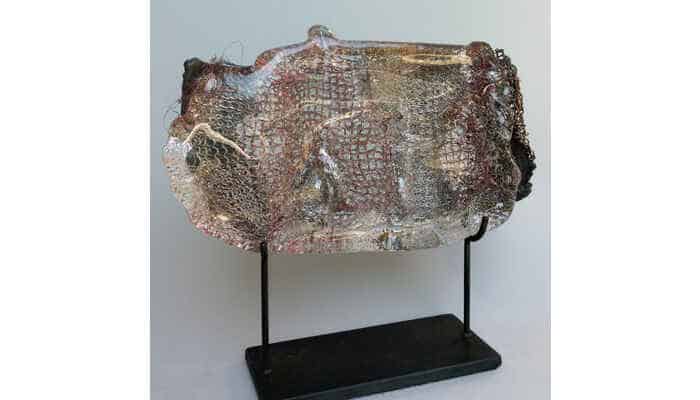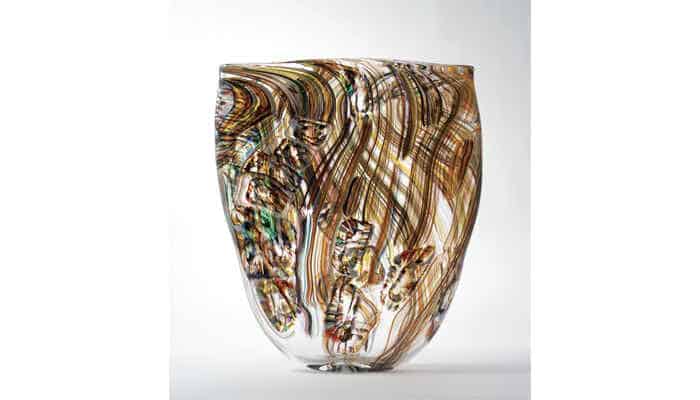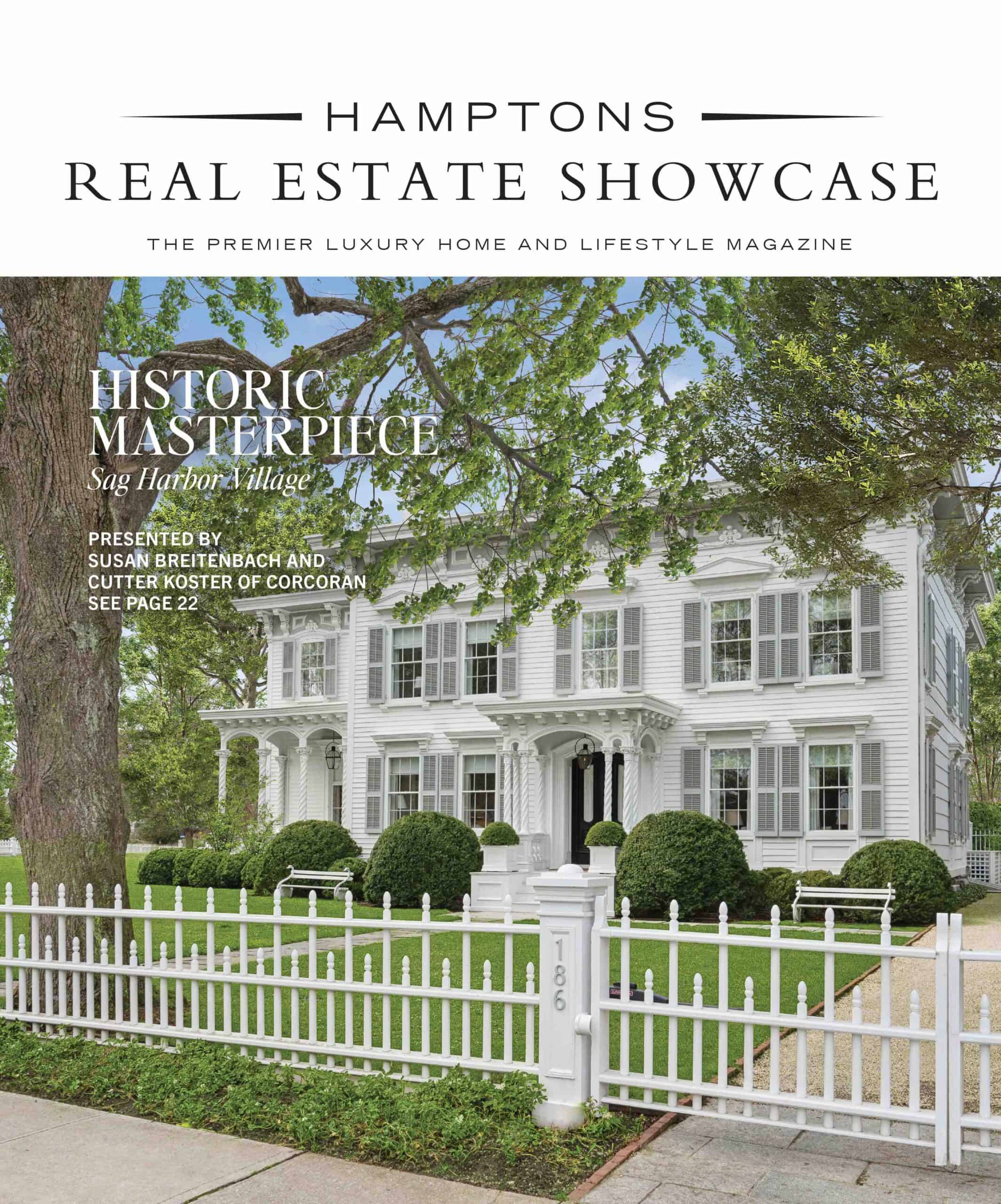Time was, contemporary art glass occupied the hinterland between fine art and decorative craft. But with works by distinguished glass makers such as Peter Layton and Dale Chihuly in museum collections, a major survey of the state of the art currently on view at the Corning Museum of Glass in Corning, NY, and the crystal manufacturer Lalique collaborating with artists and architects on blown glass objects, the Studio Glass movement has moved closer to the first camp. Some glass artists are creating site-specific installations; others are experimenting with multi-media works; still others are combining cast, fused, and blown glass into beguiling sculptural forms that catch and hold the light.
On the East End of Long Island nowhere is that light refracted so brightly as at the Mabel and Victor D’Amico Studio and Archive in Napeague where the show Four Glass Artists runs through September 7. Victor D’Amico was founding director of education at the Museum of Modern Art from 1937 to 1969 and the founder of the Art Barge on Napeague Harbor. His wife, Mabel, an artist, established her studio on the second floor of the modest beachfront home they built in the 1940s at Lazy Point, which houses their archive today. Although Ms. D’Amico wasn’t a glass blower, “she was fascinated by glass and incorporated it into her work,” says Esperanza Leon, administrative coordinator at the Victor D’Amico Institute of Art. In the main room of the Studio and Archive, the so-called Glass Room where the boundary between the bay just beyond the window and the house is very thin, glass is everywhere. There are glass marbles, paperweights, beach glass, found glass, glass mobiles, plates, glass-stoppered bottles, orbs, ashtrays, mosaics, and glass-topped bobbins. “The show arose out of Mabel’s longstanding engagement with the medium,” Leon explains. “The idea was to invite local glass artists whose work explores different terrain than her work did.”

What all four artists — Bengt Hokanson and Trefny Dix, Marianne Weill, and Andy Stenerson — have in common is a painterly approach to color. The Financial Times has compared Hokanson + Dix’s palette to that found in the work of Howard Hodgkin and Mark Rothko; a luminous cast bronze and cast glass structure by Marianne Weill was inspired by the cobalt blues of Yves Klein. And while Mabel D’Amico’s work was very much rooted in the spirit of place, some of the pieces in the show take their bearings from locations further afield — as far as the South Pole, in the case of Andy Stenerson whose atlas-like rondelles of blown, kiln, and cold-worked glass set into a welded steel frame are among the stand-outs of the show. His is technically accomplished work, with patches of sky-blue appearing beneath gradations of white as if they’d been scraped away or carved by an assured hand. “Without technique, you won’t go far as a glass blower,” says Stenerson, who adds that the skill level is vastly more advanced than what it was thirty years ago when his first instructors had all majored in ceramics. “It’s such a demanding medium, you have to know your craft.” So is art glass an art or a craft? “I think most art is decorative art,” he says. “But really, it’s both. If you’re making new decisions and you’re making them alone, without a client, and if you don’t know where the work is going, it’s art.”









![Join us May 6th at The Harmonie Club for the Spring Salon Luncheon, a beautiful gathering in support of a truly meaningful cause. Together, we’ll raise critical funds and awareness for @campgoodgriefeeh—@eastendhospice’s summer bereavement camp helping children and teens navigate loss with compassion, connection, and healing. [link in bio]](https://hamptonsrealestateshowcase.com/wp-content/uploads/sb-instagram-feed-images/491527001_18506092897030135_3117653411609489602_nfull.webp)
![Welcome to this exquisite custom-built home in the prestigious Quogue South estate section, just moments from Dune Road and some of the world’s most breathtaking ocean beaches. Completed in 2024, this expansive shingle-style residence offers 6 beds, 7 full and 2 half baths, a separate legal guest cottage, heated gunite saltwater pool with spa, all set on a beautifully manicured 0.74± acre lot. Represented by @lauren.b.ehlers of @brownharrisstevens. [link in bio]](https://hamptonsrealestateshowcase.com/wp-content/uploads/sb-instagram-feed-images/491516869_18505931593030135_4655757731678000577_nfull.webp)
![Discover 11 Oyster Shores, a unique marriage of thoughtful design, uncompromised execution and meticulous craftsmanship expressed across nearly 6,000± sq. ft. of highly curated living space. Brought to life under the watchful eye of Blake Watkins, the visionary behind WDD, the project is a refreshing departure from the ordinary. Represented by @nobleblack1 of @douglaselliman. [link in bio]](https://hamptonsrealestateshowcase.com/wp-content/uploads/sb-instagram-feed-images/491440257_18505740808030135_9064730571228880657_nfull.webp)
![Reserve your ad space now in the Memorial Day “Summer Kick-Off” Issue of #HRES! 🍋 Be seen by high-end buyers and sellers across the Hamptons, Manhattan, and South Florida—just in time for the start of the season. Secure your spot today and make waves this summer 🌊☀️ [link in bio]](https://hamptonsrealestateshowcase.com/wp-content/uploads/sb-instagram-feed-images/491441694_18505573426030135_4475989184561040528_nfull.webp)

![Tuesday, April 15, was Tax Day for most, but for someone in Palm Beach, it was closing day! The nearly 8,00± sq. ft. Mediterranean-style residence at 240 N Ocean Boulevard, with direct ocean views and a private, 100-foot beach parcel, closed at exactly $26,670,750. The seller was represented by Jack Rooney of @douglaselliman and Elizabeth DeWoody of @compass while Dana Koch of @thecorcorangroup brought the buyer. [link in bio]](https://hamptonsrealestateshowcase.com/wp-content/uploads/sb-instagram-feed-images/491445351_18505056166030135_4907944420436119099_nfull.webp)
![Previously featured on our 2024 Columbus Day issue cover, 74 Meeting House Road has officially sold! This stunning new construction in Westhampton Beach offers the perfect blend of thoughtful design and timeless style. Congratulations to @kimberlycammarata of @douglaselliman who held the listing! [link in bio]](https://hamptonsrealestateshowcase.com/wp-content/uploads/sb-instagram-feed-images/491441951_18504901357030135_2664904795600183799_nfull.webp)
![Located South of the highway in Southampton this 4 bedroom, 5.5 bath multi-story property, offers extensive exterior architectural detail throughout. 60 Middle Pond Road offers breathtaking views and tranquil living, nestled along the serene shores of Middle Pond and Shinnecock bay. Represented by @terrythompsonrealtor @douglaselliman. [link in bio]](https://hamptonsrealestateshowcase.com/wp-content/uploads/sb-instagram-feed-images/491451873_18504686110030135_5284427082339135969_nfull.webp)
